Compiled by TeamIAnD
Photography: Courtesy
Foster+Partners
Read Time: 3 mins
 |
| Clad in traditional stone and bronze, the building is sympathetic to its context.The site features three public plazas and a pedestrian dining arcade. |
Bloomberg’s new European
headquarters is rated world’s most sustainable office building!
Opening later this
month in the City of London, Bloomberg’s new European headquarters achieved an
‘Outstanding’ rating against the BREEAM sustainability assessment method, with
a 98.5% score. This is the highest design-stage score ever achieved by any
major office development.
In the opinion of Michael
R. Bloomberg, founder of Bloomberg L.P.: "We believe that environmentally-friendly
practices are as good for business as they are for the planet. From day one, we
set out to push the boundaries of sustainable office design - and to create a
place that excites and inspires our employees. The two missions went together,
and I hope we've set a new standard for what an office environment can
be."
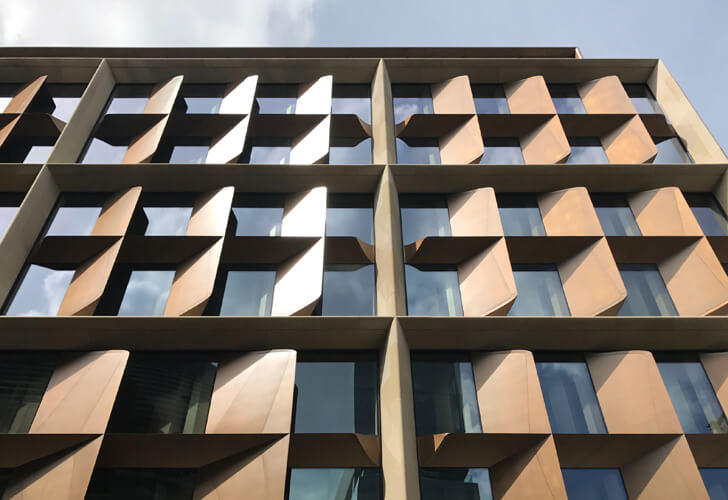 |
| The building’s distinctive bronze blades can open and close,allowing the building to operate in “breathable” natural ventilation mode. |
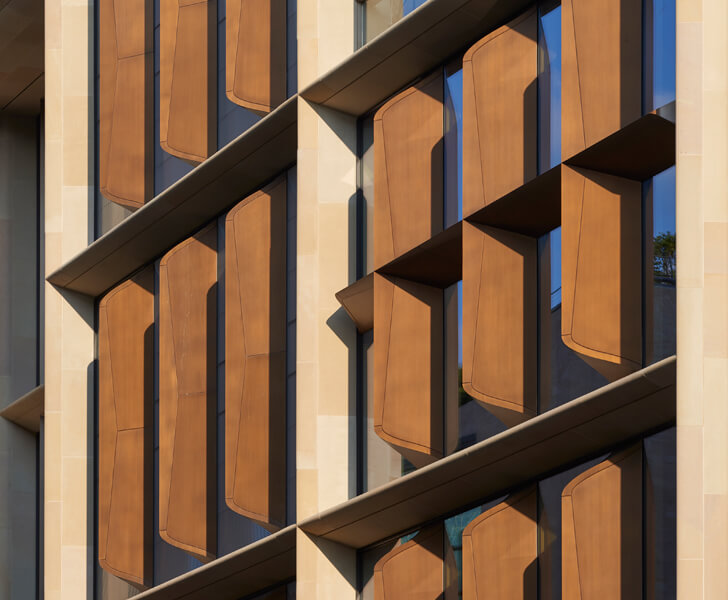 |
| Exterior facade detail |
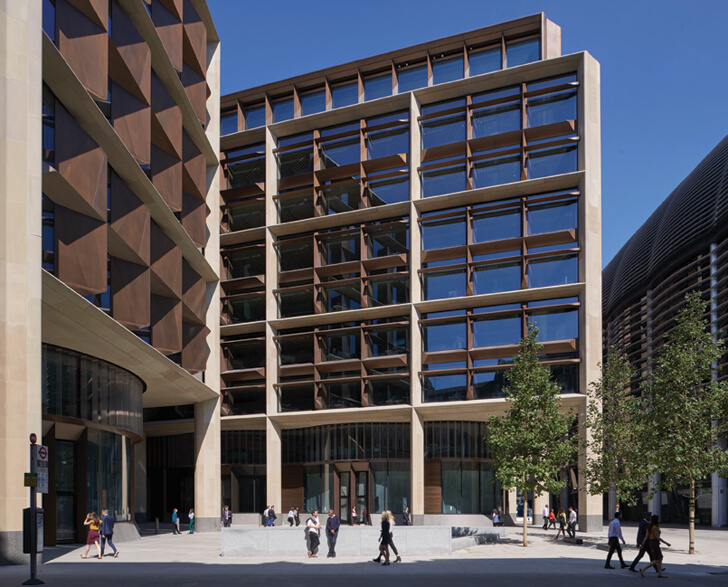 |
| Exterior Cannon Street entrance |
Compared to a
typical office building, the new Bloomberg building's environmental strategies
deliver a 73% saving in water consumption and a 35% saving in energy
consumption and associated CO₂ emissions. Innovative power, lighting, water and
ventilation systems account for the majority of energy savings. Designed to
utilise waste products, respond to the building’s external environment and
adapt to its occupancy patterns, many of these solutions are first-of-a-kind.
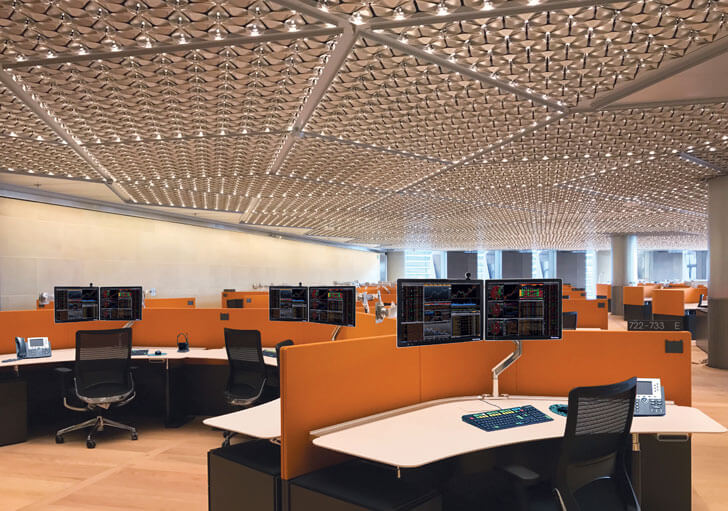 |
| Bespoke integrated ceiling panels combine heating, cooling, lighting and acoustic functions in an innovative petal-leaf design. |
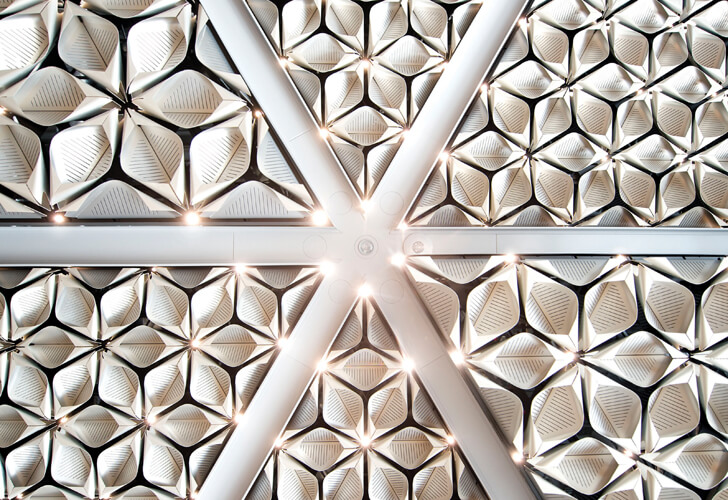 |
| Ceiling panels detail |
 |
| The ‘living wall’ in the Bloomberg pantry. Illuminated by natural light, the ‘pantry’ is a space for impromptu meetings and social interactions. |
In the words of Sir Norman Foster, Founder and Executive Chairman, Foster + Partners, “To incorporate the highest standards of sustainability, the deep plan interior spaces are naturally ventilated through a ‘breathing’ façade, while a top lit atrium edged with a spiralling ramp at the heart of the building ensures a connected, healthy and creative environment.”
Alan Yates,
Technical Director of BRE Global's Sustainability Group opines: "What sets
the Bloomberg building apart is its relentless focus on innovation and its
holistic, integrated approach to sustainable construction and design. Projects
like these are really important in giving confidence to the industry to
experiment."
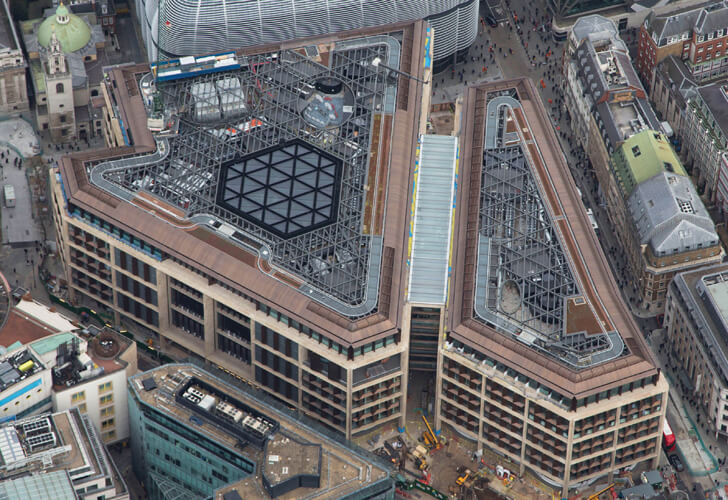 |
| Aerial view of Bloomberg’s new European headquarters in the City of London during construction. |
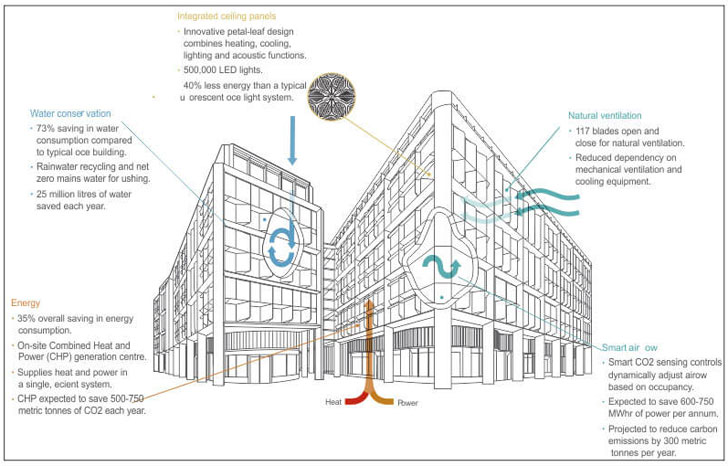 |
| Key innovations |
The project showcases an exceptional example of responsible construction: Sustainability has been central to the Bloomberg building from day one, from site selection to design and construction practices. During the six-year construction process, Bloomberg worked with contractors and subcontractors to minimise the environmental impact of the development and has achieved 95% recycling rate of demolition and construction waste.
Key strategies include:
·· Re-using existing structural foundations, such as piles, to reduce the lasting impact of the development.
·· Use of a consolidation centre for deliveries reduced traffic to site by 67%. Trucks were also fitted with equipment to minimise their emissions.
·· A unique waste management system, using barcoded wheelie bins, tracked waste production throughout the project. This resulted in a 95% recycling rate for demolition and construction waste. Use of waste compactors also helped reduce site traffic.
·· Real-time dust monitors and dampening techniques helped control dust pollution.
·· Use of LED lights during construction saved 500,000 Kwhr and £80K over the duration of the project. LEDs are 60% more efficient and last 10 times longer than fluorescent lights.
·· Use of a bespoke concrete made up of 60% recycled aggregate ultimately diverted 60,000 tonnes (2,000 dump trucks) of waste product out of landfill and reduced carbon production
by 60%.

Amazing blog and very interesting stuff you got here! I definitely learned a lot from reading through some of your earlier posts as well and decided to drop a comment on this one!
ReplyDelete